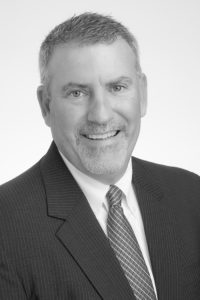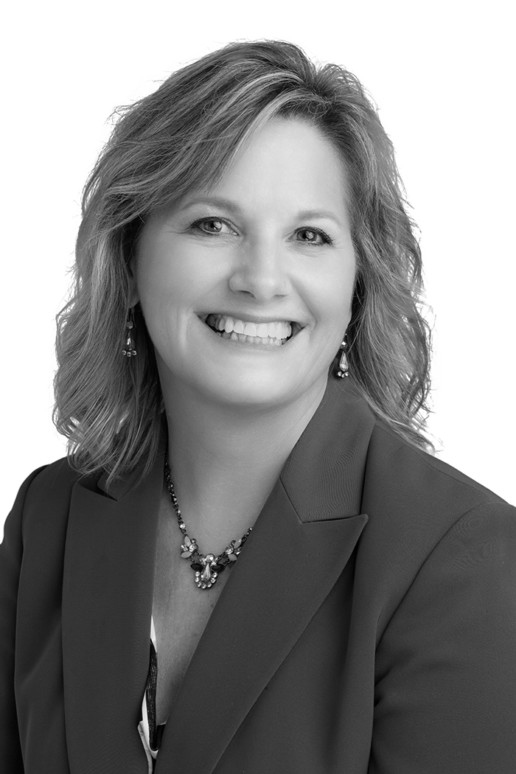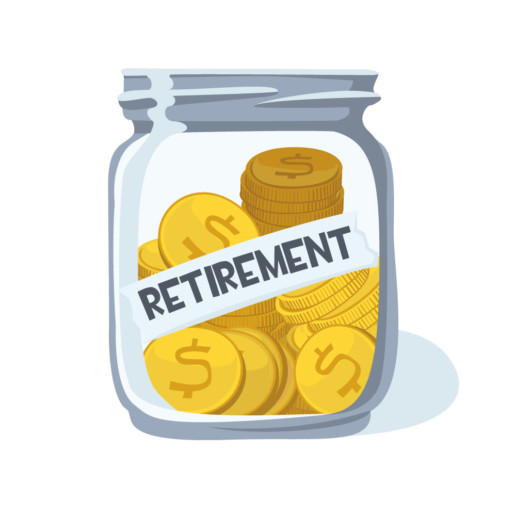10 Retirement Lessons for 2019
There are lessons to be learned from recent decisions and settlements about the best ways to protect yourself in 2019. Here are some important takeaways from recent litigation activity.
1. Your Process Matters.
New York University recently got a lawsuit dismissed by a district court because it provided evidence that it followed a prudent process when selecting investments. If a case goes to trial, you will also need to demonstrate that you made prudent decisions in order to prevail.
2. Put It in Writing.
It’s hard to prove that you followed a prudent process if you don’t write down what you did. People change jobs, die or simply forget the details of what was done if there are not minutes explaining the reasons for decisions. Have clear written policies showing what you will consider when selecting or replacing investments and reviewing fees, and make sure to follow those policies.
3. Know and Review Your Options.
Complaints have alleged that fiduciaries failed to consider alternatives to common investments, such as collective trusts as an alternative to mutual funds and stable value funds as alternatives to money market funds. Employees of investment giants such as Fidelity have sued because they claimed that these companies filled their plans with their own in-house investments even though better performing alternatives with lower fees were available. Even if you don’t select these options, you should investigate them and record the reasons for your decisions. Be especially careful about choosing your vendor’s proprietary funds without investigation.
4. Understand Target Date Funds.
They have different risk profiles, performance history, fees and glide paths. Don’t take the easy way out and automatically choose your vendor’s funds. In fact, you need to have a prudent process to select these.
5. Benchmark Plan Fees.
Be able to demonstrate that your fees are reasonable for plans of your size. But don’t compare apples to oranges. Select an appropriate peer group. Remember, though, that it is not a violation of ERISA to pay higher fees for better service, so long as the fees are reasonable.
6. Retain an Expert to Help You.
Don’t be penny wise and pound foolish. If you don’t have internal investment expertise, hire an outside fiduciary to assist you. Insist on written reports of recommendations if the fiduciary is a co-adviser, and that the fiduciary attend committee meetings to answer questions and explain the recommendations.
7. Consult Outside Counsel When Necessary.
See No. 6. Don’t try to guess what the law requires, and listen to counsel’s recommendations about best practices. While both advisers and ERISA counsel are available to provide fiduciary education, your ERISA counsel can give you a better handle on your legal responsibilities as ERISA fiduciaries.
8. Hold Regular Committee Meetings.
The days when committees met once a year are over. Many committees now meet quarterly. These should be formal meetings where committee members sit down together with the plan adviser and, where appropriate, with ERISA counsel.
A secretary should take formal minutes. Plan fiduciaries shouldn’t be meeting over the water cooler or making decisions by exchanging emails without face-to-face discussion in a misguided effort to save time.
9. Review Your Providers.
At least once a year, review whether your vendors are performing in accordance with their proposals and their services agreements, and survey your committee members to determine whether they are happy with the provider’s performance. Follow up to request changes or start an RFP to find a new vendor if necessary.
10. Schedule Regular RFPs.
Even if you are happy with your current providers, new RFPs will give you the opportunity to renegotiate your services agreements and fees and will also let you know whether additional services are available in the marketplace.
content resource: https://401kspecialistmag.com
Nothing found.
From HSA to 401(k) contribution limits, 11 numbers to know for 2019
Do you offer HSAs, FSAs or 401(k)s to your employees? There are many important numbers companies and employees need to know regarding HSAs, FSAs and 401(k)s. Read this blog post to learn more.
There are a slew of important figures companies and employees need to know regarding health savings accounts, 401(k)s and flexible spending accounts. While the IRS announced HSA changes in May, the agency only recently announced annual changes to FSAs and 401(k)s. From contribution limits to out-of-pocket amounts, here are the figures employers need to know — all of which take effect in January.
$19,000: 401(k) pre-tax contribution limits
$6,000: 401(k) catch-up contribution limit
$6,000: IRA contribution limits
$3,500: Annual HSA contribution limit for individuals
$7,000: HSA contribution limit for family coverage
$1,350: HDHP minimum deductible for individual
$2,700: HDHP minimum deductible for family
$6,750: HDHP maximum out-of-pocket amounts (individual)
$13,500: HDHP maximum out-of-pocket amounts (family)
$1,000: HSA catch-up contributions
$2,700: FSA contribution limit
SOURCE: Mayer, K. (6 December 2018) "From HSA to 401(k) contribution limits, 11 numbers to know for 2019" (Web Blog Post). Retrieved from https://www.benefitnews.com/list/from-hsa-to-401-k-contribution-limits-11-numbers-to-know-for-2019
IRS bumps up 401(k) contribution limit for 2019
Do you offer a retirement plan to your employees? The IRS recently raised the annual contribution cap for 401(k) and other retirement plans. Continue reading to find out what the new contribution caps are.
Participants in 401(k) and other defined contribution retirement accounts will see their annual contribution cap raised from $18,500 to $19,000 in 2019, according to the Internal Revenue Service.
The catch-up contribution limit on defined contribution plans remains unchanged at $6,000.
Savers with IRAs will see the annual contribution cap raised from $5,500 to $6,000 — the first time the cap on IRA deferrals has been raised since 2013. The annual catch-up contribution for savers age 50 and over will remain at $1,000.
Cost-of-Living Adjustment (COLA) increases will also be applied to the deduction phase-out scale for IRA owners who are also covered by a workplace retirement plan:
- for single filers the scale will be $64,000 to $74,000, up $1,000
- for joint filers where the spouse contributing to an IRA is also covered by a workplace plan, the phase-out slot increase to $103,000 to $123,000
- for an IRA contributor whose spouse is covered by a plan, the income phase-out is $193,000 to $2003,000
Single contributors to Roth IRAs will see the income phase-out range increase to $122,000 to $137,000, up $2,000 from last year. For married couples filing jointly the range will increase to $193,000 to $203,000, up $4,000 from last year.
More low and moderate-income families may be able to claim the Saver’s Credit on their tax returns for contributions to retirement savings plans. The threshold increases $1,000 for married couples, to $64,000; $48,000 for head of households, up $750; and $32,000 for singles and single filers, up $500 from last year.
The deferred compensation limit in defined contribution plans for pre-tax and after-tax dollars will increase $1,000, to $56,000. And the maximum defined benefit annual pension will increase $5,000, to $225,000.
SOURCE: Thornton, N. (1 November 2018) "IRS bumps up 401(k) contribution limit for 2019" (Web Blog Post). Retrieved from https://www.benefitspro.com/2018/11/01/irs-bumps-401k-contribution-limit-for-2019/
8 scary benefits behaviors employees should avoid
Nothing is more scary to benefits professionals than employees failing to review their open enrollment materials. Continue reading for eight of the scariest benefit mistakes and tips on how you can correct them.
Halloween is already frightening enough, but what really scares benefits professionals are the ways employees can mishandle their benefits. Here are eight of the biggest mistakes, with tips on correcting them.
Participants don’t review any annual enrollment materials
Why it’s scary: Employees are making or not making decisions based on little or no knowledge.
Potential actions: Employers can implement a strategic communications campaign to educate and engage employees in the media and format appropriate for that employee class, or consider engaging an enrollment counselor to work with participants in a more personalized manner.
Employees don’t enroll in the 401(k) or don’t know what investment options to choose
Why it’s scary: U.S. employees are responsible for much of their own retirement planning and often leave money on the table if there is an employer match.
Potential actions: Employers can offer auto-enrollment up to the matching amount/percent; consider partnering with a financial wellness partner, and provide regular and ongoing communications of the 401(k)’s benefits to all employees.
Employees don’t engage in the wellness program
Why it’s scary: The employee is potentially missing out on the financial and personal benefits of participating in a well-being program.
Potential actions: Employers need to continuously communicate the wellness program throughout the year through various media, including home media. Employers also should ensure the program is meeting the needs of the employees and their families.
Employees don’t update ineligible dependents on the plan
Why it’s scary: Due to ambiguity where the liability would reside, either the employee or the plan could have unexpected liability.
Potential action: Employers can require ongoing documentation of dependents and periodically conduct a dependent audit.
Employees don’t review their beneficiary information regularly
Why it’s scary: Life insurance policy proceeds may not be awarded according to the employee’s wishes.
Potential action: Employers can require beneficiary confirmation or updates during open enrollment.
Employees do not evaluate the options for disability — whether to elect a higher benefit or have the benefit paid post-tax
Why it’s scary: Disability, especially a short-term episode, is very common during one’s working life; maximizing the benefit costs very little in terms of pay deductions, but can reap significant value when someone is unable to work.
Potential action: Employers can provide webinars/educational sessions on non-medical benefits to address those needs.
Employees do not take the opportunity to contribute to the health savings account
Why it’s scary: The HSA offers triple tax benefits for long-term financial security, while providing a safety net for near-term medical expenses.
Potential actions: Employers can select the most administratively simple process to enroll participants in the HSA and allow for longer enrollment periods for this coverage.
Employees do not use all of their vacation time
Why it’s scary: Vacation allows an employee an opportunity to recharge for the job.
Potential actions: Employers can encourage employees to use their vacation and suggest when the workload might be more accommodating to time off for those employees who worry about workloads.
SOURCE: Gill, S. & Manning-Hughes, R. (31 October 2018) "8 Scary Benefits Behaviors Employees Should Avoid" (Web Blog Post). Retrieved from https://www.benefitnews.com/slideshow/8-scary-benefits-behaviors-employees-have?brief=00000152-14a5-d1cc-a5fa-7cff48fe0001
Is a Health Savings Account Worth Your Time? The Best Advice from an Experienced Group Benefits Consultant.
This month’s CenterStage features Kelley Bell, a Group Benefits Consultant at Saxon. With over 25 years of experience in the financial industry, Kelley knows a thing or two on HSAs or Health Savings Accounts – what they are, who is eligible, how they’re funded, and when they can be used.
Kelley enjoys partnering with business owners and human resources managers to be their Healthcare Consultant. She understands that each business is unique and is dedicated, accessible and proactive in serving the needs of each client.
So, is an HSA a right fit for you? Let’s find out!
The Break-Down
Very similar to personal savings accounts, money in a Health Savings Account (HSA) is used to pay for eligible healthcare expenses (medical, dental and vision). You, not your employer or insurance company, own and control the money in your HSA. To be eligible for an HSA, you must have a special type of health insurance called a high-deductible health plan (HDHP).
With an HSA you can make tax-deductible contributions each year to pay for current and future healthcare costs. What you don't use in any given year will stay invested and continue to grow tax-free, assuming you eventually pull it out to use for medical costs. -CNN Money
Saxon offers HDHP group plans from one person on up that can be paired with the HSA. Here are some different highlights you should know if you are considering this type of Health Savings Account:
- HSA's aren't ideal for everyone. If having a high deductible seems too risky to you – or if you anticipate having significant healthcare expenses – a plan with a lower deductible and lower co-pays might make more sense.
- There are tax advantages, because deductibles on the HDHP are higher, premiums are generally lower.
- There is a maximum contribution limit per calendar year of $3,400 for individuals and $6,850 for families for 2018. Sometimes, these maximums do not reach your deductible. A personal tip: “Try to add a small amount via pre-tax payroll. You can change the amount anytime and if you have a significant procedure, try adding the funds to the account before the payment is due
- If you’re over the age of 55, you can make an additional “catch-up” contribution of $1,000 to that account.
- It is your account. You make the decisions about the contributions and its use. If the funds are not used, the money rolls over to the next year and continues to grow over time.
- If your employer switches to a different plan, your HSA is still your HSA. The money within your HSA is yours and can continue to be used for eligible medical expenses until it runs out.
- Most banks provide you with access to your HSA through a checkbook and debit card. You can use these to pay your doctor, as well as for prescriptions at the pharmacy.
Whether an HSA is a good fit for you is determined through each of these highlights, but it comes down to personal preference and your overall health. There’s a lot of freedom with HSAs – which is why it’s important to take your time considering every perk and downfall.
Contributions, Withdrawals, Earnings, & Roll Over
The money you deposit into the account is not taxed. The idea is people will spend their healthcare dollars more wisely if they're using their own money.
However, others can contribute to your HSA. Contributions can come from various sources, including you, your employer, a relative and anyone else who wants to add to your HSA. However, if you exceed the maximum contribution limit, you could be penalized by the IRS.
- Pre-tax contributions. Contributions made through payroll deposits (through your employer) are typically made with pre-tax dollars, which means they are not subject to federal income taxes. In most states, contributions are not subject to state income taxes either. Your employer can also make contributions on your behalf, and the contribution is not included in your gross income.
- Tax-deductible contributions. Contributions made with after-tax dollars can be deducted from your gross income on your tax return, which means you may owe less tax at the end of the year.
It’s also key to understand withdrawals, earnings, and roll over with HSAs:
- Tax-free withdrawals. Withdrawals from your HSA are not subject to federal (or in most cases, state) income taxes if they are used for qualified medical expenses.
- Earnings are tax-fee. Any interest or other earnings on the assets in the account are tax free.
- Funds roll over. If you have money left in your HSA at the end of the year, it rolls over to the next year.
- Investment tool. Many people use it as an investment tool, not just for current or future medical expenses, but for long-term retirement planning.
Keep your receipts in the event that you are audited by the IRS to show that you used the funds in your HSA for eligible medical expenses.
Conclusion
A Health Savings Account can be a great choice for people who wish to limit their upfront healthcare costs while saving for future expenses. HSAs go together with HDHPs. In addition, favorable tax treatment means you may owe less in taxes on your income tax return. What’s more, an HSA may allow you to pay in pre-tax dollars for items your employer’s other insurance options don’t cover, such as eyeglasses.
HSAs have the potential to become “more compelling than a 401(k)” due to tax-deductible and tax-deferred incentives. Does it sound like you’re a perfect match for a Health Savings Account? Still not sure if a HSA a good fit for you? Contact Kelley at 513-774-5493 for more information on taking this step towards a better health plan.
Download The Full Article
Tax Cut Spurs Employers to Boost 401(k) Contributions
Following one after the other, large employers including Wal-Mart, Aflac and SunTrust have announced significant compensation and benefits changes and attributed them to the Tax Cuts and Jobs Act, which President Donald Trump signed into law in December.
Experts expect hundreds of other employers to join suit.
A new study from global consulting and advisory firm Willis Towers Watson found that about half of 333 large and mid-sized companies polled plan on making changes to their employee benefits, compensation, total rewards and executive pay programs within the next year.
All told, 66% of employers surveyed have either made changes to their benefits packages or are considering making changes. The most common changes are expanding personal finance planning (34%), increasing 401(k) contributions (26%) and increasing or accelerated pension plan contributions (19%), according to WTW.
About 22% of employers say they plan on addressing pay gap issues — a hot topic in the wake of the #MeToo movement and the public firings of top CEOs, editors and TV anchors, politicians and chefs — as part of a broad-based approach to compensation, according to the report.

“The tax reform law is creating economic opportunity to invest in their people programs,” says John Bremen, managing director of human capital and benefits at Willis Towers Watson. “While a significant number have already announced changes to some of their programs, the majority of employers are proceeding to determine which changes will have the highest impact and generate the greatest value.”
Although the Tax Cuts and Jobs Act slashed the corporate tax rate to 21% from 35%, one expert says the decision of where to place those extra savings is going to vary by employer.
“Clearly you have that situation where there has been a tremendous amount of activity,” says Jack Towarnicky, executive director for Plan Sponsor Council of America. “I haven’t seen a comparable situation in the past where somebody announced a particular change and so many others have moved in the same direction. I think it would be as varied as the enterprises themselves where they deploy any corporate reduction.”
Some companies, such as Boeing, Disney and MidWestOne Bank, announced one-time bonuses and student loan repayment contributions, respectively, but said those decisions were not made with consideration to the tax reform.
The heavy lift of raising retirement benefits
Any changes to a company’s employee benefits plan require analysis and strategy to determine the predicted costs, which is more time-consuming than giving every employee a one-time bonus, Towarnicky says.
“There have been a handful of employers that have announced changes in 401(k) savings plans, but it’s clearly dwarfed by the number of employers that announced one-time bonus payments,” he says. “There is a difference between a one-time action and a change to your 401(k) match. It is reasonably predictable if you’ve got a match and you’re going to increase it.”
Employers may also apply those extra savings to voluntary or employer-sponsored benefits, a growing trend for 2018, and wellness initiatives that transcend the benefits package.
Companies with larger, campus-like office buildings are beginning to invest in bike trails around the area and ergonomic work stations, says Catherine O’Neill, senior healthcare consultant at Willis Towers Watson.
Employers are “trying to blend their work environment with their benefits strategy or wellness strategy to make it more successful,” O’Neill says.
While the changes will remain to be seen, Towarnicky warns employers faced with reinvesting their tax savings that those rates may not remain in effect indefinitely.
“Too many times, particularly when it comes to retirement, people develop expectations,” he says. “Any reductions [to benefits or compensation] have a negative impact on employee relations.”
Read more.
Source: Eisenburg A. (28 January 2018). "Tax cut spurs employers to boost 401(k) contributions" [Web Blog Post]. Retrieved from address https://www.benefitnews.com/news/tax-cut-spurs-employers-to-boost-401k-contributions?brief=00000152-14a7-d1cc-a5fa-7cffccf00000
What's Really Draining Employee 401(k) Accounts
Are your employees placing enough emphasis in their retirement? Here is a great article by Cynthia Loh from Employee Benefit Advisor on what employers can do to help their employees properly utilize their 401(k)s.
When it comes to debating the root cause of why Americans, as a whole, are short at least $6.8 trillion in retirement savings, it’s never long before someone points a finger at fees.
But while fees do their part to erode retirement nest eggs, there’s actually something far more detrimental to a comfortable retirement: the investing behavior of savers themselves. In fact, behavioral mistakes could cost savers 1.56% per year.
How does poor behavior add up to such a cost? Here are three core employee 401(k) missteps, and how plan sponsors can limit them.
1. Employees often make poor fund selections
Employees generally find it challenging to choose their own investments, and the task often ends up costing them.
For many employees, the initial obstacle of setting up a 401(k) plan stops them in their tracks. A large fund line-up can cause analysis paralysis, and actually reduce participation rates. One study found that for every additional 10 funds added to a set of plan options, participation drops by about 2%.
For those employees who do participate, they are left to fend for themselves with complex fund lineups. Ideally, they would establish an asset allocation with a correct level of risk and an optimal diversification for that risk tolerance. Unfortunately, a 2015 study by Financial Engines found that 61% of unadvised plan participants had inappropriate risk levels.
Finally, it’s not uncommon for employees to attempt investment selection without fully understanding proper diversification. Instead of balancing risk, participants might divide their money evenly between the options on an investment menu. For example, if six out of 10 options are stock funds, they are likely to end up at roughly 60% stocks. If 18 out of 20 options are stock funds, they will end up with 90% stocks.
So, what should you, the plan sponsor, do when your employees face a 401(k) situation that seems to inhibit participation, leads to unnecessary risk, and fails to encourage proper diversification?
Solution: Consider offering managed 401(k) accounts as a Qualified Default Investment Alternative
If employees find it challenging to make fund selections confidently, why not build in default investment advice to your plan? A Qualified Default Investment Alternative (QDIA) provides a standard, default offer of a portfolio customized to each employee. By constructing a diversified, optimized portfolio for each employee as a standard service, your 401(k) plan can help employees avoid uninformed decisions about their investments. The fund selection process will be more straightforward for new employees. As such, they may be less likely to opt for unduly high risk levels, and, by default, their investments will then be properly diversified.
In other words, rather than providing employees with a list of ingredients, provide them with a prepared meal customized to their palate and set up to satisfy their financial health.
2. 401(k) participants often “set it and forget it”
For those participants that successfully navigate participation, asset allocation, and fund selection, the ongoing maintenance of a 401(k) still presents challenges. Many plan participants choose their deferral rates and funds on the first day of work and might not change anything for the entire time they’re at that employer — or even after they leave. Meanwhile, they’re missing out on the benefits that could be had by rebalancing or switching investments based on macro trends, such as an ETF price decrease.
Plan sponsors should consider all the options available to them for helping employees understand the right asset allocation, appropriate fund allocations, ongoing portfolio maintenance — and the path forward to a secure, stable retirement.
Solution: Enable automation to help your employees maintain their 401(k)
401(k) maintenance is essential, but it shouldn’t fall on individual employees to disrupt their daily lives to keep things up-to-date. Technology can make the task of maintaining 401(k) investments far easier for employees.
If employees don’t want to actively revisit their deferral rates and asset allocations on an annual basis, automation can handle the process of portfolio rebalancing and tax optimization for the participant. While target-date funds (TDFs) have offered limited automatic adjustment for years, today, 401(k) plans built with automated advice tend to offer more personalized optimization for employees. For instance, TDFs usually rely on a generic set of assumptions about their investors to determine how they rebalance and adjust risk over time. Automated 401(k) plans can offer personalized rebalancing, tax optimization, and asset reallocation, solving for an individual’s specific characteristics and goals.
3. Poor investing behavior is a workplace issue
Employees talk to each other about their benefits, worry together from time to time, and often ask one another for advice. In short, water-cooler talk plays a role in how participants behave with regards to their 401(k).
In any given office, there’s at least one employee — we’ll call him Gary — who fancies himself a stock trading guru. Gary checks the morning headlines and stock tickers. He’s always offering unsolicited financial advice to his fellow colleagues. And he spends a lot of time at the water cooler.
For novice employees, having somebody like Gary in the office can either inspire them to gain financial literacy or drastically sway their investing behavior. As the plan’s fiduciary, the 401(k) plan sponsor should make sure the right financial advice reaches all employees, so that water-cooler talk from people like Gary doesn’t play too large a role in employees’ investing behavior.
Solution: Offer personalized financial advice in your 401(k) plan
A responsible way to give employees the information they need to make good decisions is to offer personalized financial advice with your 401(k) plan. Advice from a fiduciary adviser helps participants make decisions for their own individual situation, removing the confusion of what they hear at work, see on television, or learn from their peers.
That advice becomes more valuable when it takes into account personal goals such as buying a home and covers all assets, including 401(k) assets. Some 401(k) platforms have educational features built in that can anticipate when a participant has a question or appears confused and serves up tailored information that can help employees make a sound decision. Others make use of customer service centers that make it easy for employees to ask questions to experts when they need to, rather than front-loading them with information during an orientation.
Save your employees the cost of poor investing behavior
When it comes down to it, plan sponsors often underestimate just how confusing 401(k) plans can be for employees. Most employees know that saving for retirement is important, but few actually understand all they should do to maximize the benefit of their 401(k) contributions.
Help your employees save money by selecting a 401(k) solution that helps to minimize behavioral mistakes. Poor fund selection, lack of account maintenance, and bad advice shouldn’t detract from employees’ results. With elegant solutions like a managed account QDIA, investment automation, and expert advice, you can save your employees time, money and anxiety.
See the original article Here.
Source:
Loh C. (2017 June 13). What's really draining employee 401(k) accounts [Web blog post]. Retrieved from address https://www.employeebenefitadviser.com/opinion/whats-really-draining-employee-401-k-accounts
401(k) Borrowing Isn’t Free
Have your employees been dipping into their 401(k)s to support their financial needs? Then take a look at this article by David Sherman from Employee Benefit Adviser on why employees shouldn't dip into their 401(k)s and what employers can do to help employees support themselves financially without having to use the money saved in their 401(k)s.
When dire financial need strikes, employees often tap their retirement accounts. While there are cases in which a 401(k) withdrawal makes sense, these loans should be viewed as an absolute last resort.
There are significant downsides related to 401(k) loans such as including penalties, administration and maintenance fees as well as “leakage” from retirement accounts. This occurs when an employee takes a loan on their 401(k), cashes out entirely or leaves their job and rolls over their account to their new employer.
Borrowing from retirement plans presents hazards to the employer, as well. More employers are minimizing the ability of employees to dip into their 401(k) savings by limiting the number of loans from 66% in 2012 to 45% in 2016, according to SHRM. Despite this, the bottom line is that employees need access to low cost credit.
More than 1-in-4 participants use their 401(k) savings for non-retirement needs, according to financial education provider HelloWallet. That amounts to a startling $70 billion of retirement savings that employees are siphoning away from their future.
There are hidden costs to 401(k) loans. One of the perceived benefits of a 401(k) loan is that the borrower isn’t charged any interest. That’s a fallacy: 401(k) loans typically include interest rates that are 1 to 2 points higher than the current Prime Rate plus administrative fees. While the borrower pays this money to him or herself rather than to a bank, these “repayments” don’t take into account penalty of taking money out of a 401(k) for months or years when it might have enjoyed market gains.
The downside of the interest rate is that it makes paying back the loan more difficult and this will likely lead to 401(k) leakage. In some cases, loopholes that allow employees to raid their 401(k)s before retirement reduce the aggregate wealth in those accounts by 25%. Simply put, this translates into having the most senior and highest paid employees stay on the job because they do not have enough funds in their account to retire. From an HR administrator’s standpoint, that can increase overall costs, since employees who cannot afford to retire are drawing higher-than-average salaries. And thanks to their advanced age, they also run-up costs on the employer’s medical plan.
The financial wellness alternative
Employers should offer socially responsible alternatives to borrowing from their 401k. Not only to ensure that older workers can afford to retire and make room for younger, less-expensive hires, but to ease the financial burden for employees when emergencies do happen. This should be offered as a voluntary benefit with no risk to employers. In a recent Wall Street Journal article, “The Rising Retirement Perils of 401(k) ‘Leakage’” Redner’s Markets made that leap offering a low-cost Kashable loan to its employees. It stopped leakage and offered employees of the online grocer much needed relief from financial stress.
Adding a financial wellness solution to the employee voluntary benefits package that provides access to responsible credit is a first step in untangling employees’ financials. For employees struggling with college loans and credit card debt, this financial-wellness benefit allows them to borrow when needed at a low rate. For the 35% of employees surveyed by PWC in 2016 that said they had trouble meeting their monthly household expenses and the 29% that said they had trouble meeting their minimum credit card charges each month, this voluntary program provides multiple benefits. For the employee, it is an opportunity to build or improve their credit score, and provide relief from financial stress. To the employer, it’s a risk-free solution to stop the leakage from retirement accounts.
See the original article Here.
Source:
Sherman D. (2017 June 5). 401(k) borrowing isn't free [Web blog post]. Retrieved from address https://www.employeebenefitadviser.com/opinion/401-k-borrowing-isnt-free?feed=00000152-1377-d1cc-a5fa-7fff0c920000
Traditional IRA, Roth IRA, 401(k), 403(b): What’s the Difference?
The earlier you begin planning for retirement, the better off you will be. However, the problem is that most people don’t know how to get started or which product is the best vehicle to get you there.
A good retirement plan usually involves more than one type of savings account for your retirement funds. This may include both an IRA and a 401(k) allowing you to maximize your planning efforts.
If you haven’t begun saving for retirement yet, don’t be discouraged. Whether you begin through an employer sponsored plan like a 401(k) or 403(b) or you begin a Traditional or Roth IRA that will allow you to grow earnings from investments through tax deferral, it is never too late or too early to begin planning.
This article discusses the four main retirement savings accounts, the differences between them and how Saxon can help you grow your nest egg.
“A major trend we see is that if people don't have an advisor to meet with, they tend to invest too conservatively because they are afraid of making a mistake,” said Kevin. “Then the problem is that they don't revisit it and if you’re not taking on enough risk you’re not giving yourself enough opportunity for growth. Then you run the risk that your nest egg might not grow to what it should be.”
“Saxon is here to help people make the best decision on how to invest based upon their risk tolerance. We have questionnaires to determine an individual’s risk factors, whether it be conservative, moderate or aggressive and we make sure to revisit these things on an ongoing basis.”

Traditional IRA vs. Roth IRA
Who offers the plans?
Both Traditional and Roth IRAs are offered through credit unions, banks, brokerage and mutual fund companies. These plans offer endless options to invest, including individual stocks, mutual funds, etc.
Eligibility
Anyone with earned, W-2 income from an employer can contribute to Traditional or Roth IRAs as long as you do not exceed the maximum contribution limits.
With Traditional and Roth IRAs, you can contribute while you have earned, W-2 income from an employer. However, any retirement or pension income doesn't count.
“Saxon is here to help people make the best decision on how to invest based upon their risk tolerance. We have questionnaires to determine an individual’s risk factors, whether it be conservative, moderate or aggressive and we make sure to revisit these things on an ongoing basis.”
Tax Treatment
With a Traditional IRA, typically contributions are fully tax-deductible and grow tax deferred so when you take the money out at retirement it is taxable. With a Roth IRA, the money is not tax deductible but grows tax deferred so when the money is taken out at retirement it will be tax free.
"The trouble is that nobody knows where tax brackets are going to be down the road in retirement. Nobody can predict with any kind of certainty because they change,” explained Kevin. “That’s why I'm a big fan of a Roth.”
“A Roth IRA can be a win-win situation from a tax standpoint. Whether the tax brackets are high or low when you retire, who cares? Because your money is going to be tax free when you withdraw it. Another advantage is that at 70 ½ you are not required to start taking money out. So, we've seen Roth IRA's used as an estate planning tool, as you can pass it down to your children as a part of your estate plan and they'll be able to take that money out tax free. It's an immense gift,” Kevin finished.
Maximum Contribution Limits
Contribution limits between the Traditional and Roth IRAs are the same; the maximum contribution is $5,500, or $6,500 for participants 50 and older.
However, if your earned income is less than $5,500 in a year, say $4,000, that is all you would be eligible to contribute.
"People always tell me 'Wow, $5,000, I wish I could do that. I can only do $2,000.' Great, do $2,000,” explained Kevin. “I always tell people to do what they can and then keep revisiting it and contributing more when you can. If you increase a little each year, you will be contributing $5,000 eventually and not even notice."
Withdrawal Rules
With a Traditional IRA, withdrawals can begin at age 59 ½ without a 10% early withdrawal penalty but still with Federal and State taxes. The Federal and State government will mandate that you begin withdrawing at age 70 ½.
Even though most withdrawals are scheduled for after the age of 59 ½, a Roth IRA has no required minimum distribution age and will allow you to withdraw earned contributions at any time. So, if you have contributed $15,000 to a Roth IRA but the actual value of it is $20,000 due to interest growth, then the contributed $15,000 could be withdrawn with no penalty.
Employer Related Plans - 401(k) & 403(b)
A 401(k) and a 403(b) are theoretically the same thing; they share a lot of similar characteristics with a Traditional IRA as well.
Typically, with these plans, employers match employee contributions .50 on the dollar up to 6%. The key to this is to make sure you are contributing anything you can to receive a full employer match.
Who offers the plans?
The key difference with these two plans lies in if the employer is a for-profit or non-profit entity. These plans will have set options of where to invest, often a collection of investment options selected by the employer.
Eligibility
401(k)'s and 403(b)'s are open to all employees of the company for as long as they are employed there. If an employee leaves the company they are no longer eligible for these plans since 401(k) or 403(b) contributions can only be made through pay roll deductions. However, you can roll it over into an IRA and then continue to contribute on your own.
Only if you take possession of these funds would you pay taxes on them. If you have a check sent to you and deposit it into your checking account – you don't want to do that. Then they take out federal and state taxes and tack on a 10% early withdrawal penalty if you are not age 59 ½. It may be beneficial to roll a 401(k) or 403(b) left behind at a previous employer over to an IRA so it is in your control.
Tax Treatment
Similar to a Traditional IRA, contributions are made into your account on a pretax basis through payroll deduction.
Maximum Contribution Limits
The maximum contribution is $18,000, or $24,000 for participants 50 and older.
Depending on the employer, some 401(k) and 403(b) plans provide loan privileges, providing the employee the ability to borrow money from the employer without being penalized.
Withdrawal Rules
In most instances, comparable to a Traditional IRA, withdrawals can begin at age 59 ½ without a 10% early withdrawal penalty. Federal and State government will mandate that you begin withdrawing at age 70 ½. Contributions and earnings from these accounts will be taxable as ordinary income. There are certain circumstances when one can have penalty free withdrawals at age 55, check with your financial or tax advisor.
In Conclusion…
"It is important to make sure you are contributing to any employer sponsored plan available to you so that you are receiving the full employer match. If you have extra money in your budget and are looking to save additional money towards retirement, that’s where I would look at beginning a Roth IRA. Then you can say that you are deriving the benefits of both plans - contributing some money on a pretax basis, lowering federal and state taxes right now, getting the full employer contribution match and then saving some money additionally in a Roth that can provide tax free funds/distributions down the road," finished Kevin.
To download the full article click Here.
Do You Know What Your Retirement Plan Is?
"People don’t plan to fail they fail to plan. Retirement is about what you want out of life, what do you need to do to sustain the lifestyle you have become accustomed too? Unfortunately, most people in America never really retire because they have not planned properly. Retirement is a process that begins in your 20s, 30s, 40s.” - Garry Rutledge, Saxon Partner.

The biggest hurdle of retirement is getting something started. Getting a start on retirement early in life will provide a massive amount of appreciation over time. Even if only a small amount is put away early in life, compound interest will do much of the work. Here are some other ways to begin building your retirement funds.
20s
In your 20s, time is your biggest ally when it comes to saving for retirement. Many people in their twenties are just getting out of school and excited to live life rather than thinking about putting something away for retirement that seems so far down the road.
Investigate any company options
Consider employer sponsored plans available- 401k, 457, 403(b) – different sectors of the economy have different company sponsored retirement plans.
Know where you are headed.
- Only 48% of people have even bothered trying to figure out how much they need to retire comfortably, according to the Employee Benefit Research Institute's 2015 Retirement Confidence Survey.
- The rule of 72 is a math rule that determines how long it will take to double funds for any given rate of return. The amount returned divided by 72 would be the amount of time it takes to double your money. Ex. If your money is in a savings account earning three percent a year, it will take twenty-four years to double your money (72/3=24).
- A Roth is a type of retirement account that grows tax free meaning you only pay taxes on the money going into the account.
- "I would heavily encourage a Roth, I am very pro Roth IRA versus the traditional tax deferred plan,” Garry advised. “The best analogy I can make to this is: 'would you rather pay taxes on the crop you harvest or would you rather pay taxes on the seeds you plant?' What this really means is that you can take a small handful of seeds and plant a crop that will amount to a huge harvest."
30s
It is about late 30s when people begin to realize retirement is not that far away. This is the time in life that people are thinking about beginning families and having kids, it is also the point in life that you can start understanding what realistic retirement goals look like. "In my 28 years of experience," Garry explained, "most people don't start planning for retirement until their late 30s." Whether you're already saving or just starting now, carrying good habits throughout your 30s can pay off in the future.
Company sponsored plans are key
- If you are just beginning in 30s, consider company sponsored plans that will have a match of a percentage of one’s salary. That translates into a 100% return on your money and you haven't done any investing yet.
- If you are already contributing into your company's plan, make small increases each year to work towards your savings goal.
Keep it balanced
- "The 'perfect retirement plan' would have the perfect balance of pretax contributions, meaning before tax qualified plans and after tax contributions (brokerage accounts or Roth IRAs) allow both plans to complement each other."
College is important, but retirement comes first
- A lot of people try to begin planning for their children's college at this point but retirement planning should come before planning for college. After all, people won't lend you money to retire with.
40s/50s/60s
The biggest thing at this point in life is "Do you know what your plan is and are you on track?" If you build a house, you start with a plan. Same is true for retirement.
This is the time to be deciding if you are on track for retirement. Do you have a plan and a budget? Have you created a financial plan? Do you know how you want to retire? Your perspective of what retirement looks like is truly your reality.
The closer you get to 65, the retirement age, more alarms that are beginning to go off. If you haven't done anything at this point you must take a serious look at what your plans are
Slow and Steady
- If you've been planning and following a plan, keep up the good work! The only way to eat an elephant is one bite at a time.
If you have not begun planning...
- Time isn't your ally at this point.
- You will have to be more aggressive in your strategies.
- Again, the most beneficial thing you can do is seek out company plans with matches.
Know your alternatives
• A thing to consider that most people don't plan for is long term care. This is a good option to explore because it is still cheap enough in your 50s to afford.
• Consider how social security will play into your financial plan. Make sure you maximize your social security benefit.
• Have you changed your investment risk to meet your risk tolerance? As you get older your investments cannot generally tolerate the same amount of risk. The sequence of returns in retirement can devastate your retirement plan.
Seek professional help and guidance
- Saxon takes a holistic approach to planning.
- Company sponsored plan approach
- While Saxon does not benefit from any contributions to your company plan, they know that this is the best place for a client's money to be.
- Saxon can help you stay on track and give sound investment advice
- Company sponsored plan approach
"The advisors at Saxon can help you create a plan for the future and offer suggestions on how to invest money," explained Garry. "Asking for help is one of the best things you can do – people are busy – and developing a plan and having a ‘coach’ to make sure you stick to the plan when things seem bleak will reward you over time”.
To download the full article click Here.










